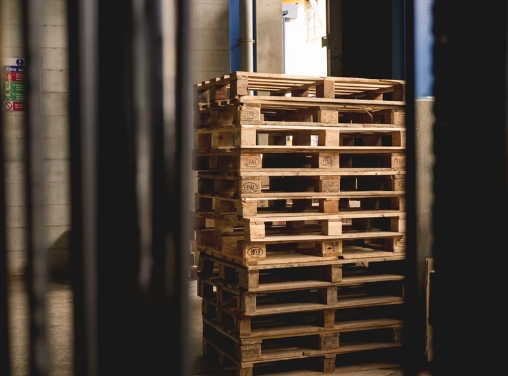What Is Transloading?
Transloading refers to when inbound freight is unloaded, unpacked, sorted through, and organized into different pallets for outbound shipping.
Transloading is not to be confused with cross-docking, which is just the unloading of inbound freight, storing it in a warehouse or terminal for a brief period of time, then loading it back onto trucks for outbound shipping. The pallets do not get broken down and re-palletized in cross-docking.
What Products Are Accepted for Transloading Services?
As long as the trucks are qualified and fully equipped with proper safety measures, a multitude of products can be transloaded, including but not limited to:
- Dry bulk transloading: coal, pellets, sand, paper, farm feed, grains, flour, sugar
- Other consumable goods: canned foods, frozen food, fresh produce
- Construction materials: lumber, metal, bricks, tiles, paper
- Oversized transloading: auto-parts, solar panels, machinery, military vehicles
- Liquids: ethanol, diesel fuel, and other flammable or hazardous chemicals
How Are Transloading Services Performed?
Transloading services are typically performed in the same way. The cargo arrives at the transloading facility, gets sorted by workers, then gets re-palletized and placed on different trucks for either the next leg of its journey, or placed into storage facilities. But depending on the type of cargo, different types of equipment are used in this process.
- Forklifts: transfer pallets from a truck to a rail cart
- Cranes: used when moving heavy products like steel cargo onto flatbed trucks
- Conveyor belts: for bulk products like rice and sand
- Pumps: for plastic pellets and liquids
What Are Some Benefits of Transloading Services?
- Cost-Effective
One of the biggest advantages that come with using transloading is that it is incredibly cost-effective. Transloading services allow shippers the benefit of being flexible in choosing a transportation method, like rail or truck. A lot of shippers and carriers don’t have rail tracks near their facilities, but with transloading, they can still reap the benefits of rail affordability by utilizing transloading to transport cargo from warehouses to rail cars. And with rail freight costing less for long journeys, the transportation process is also fuel efficient, contributing to lower transloading costs.
- Increases Shipping Destinations
With the increased freedom and flexibility to choose different modes of transportation during a shipment also comes the chance to diversify and expand a business’s customer base. Transloading offers multiple transportation routes to ship cargo safely and securely via a combination of rail and trucks, which means customers can be in remote or international locations.
- Offers Storage Options
Cargo can be transloaded for ground storage, and then transloaded again back onto trucks and trains when it’s time for the final delivery. This is especially useful for on-demand shipping, since products can be prepared in advance, and just be stored in warehouses or distribution centers prior to being ordered.



